If you’re planning a trip to Madrid and want to experience the soul-stirring beauty of flamenco, then I’ve got two incredible shows for you. Don’t worry if you’re short on time and can’t read the whole article, I’ve got you with this handy summary.

*Note some of the links feature affiliate links. I only recommend items that I 100% love and think you will too!
Introduction to Flamenco
Flamenco is a traditional Spanish artform that originated in the south of Spain, particularly Andalusia. It has existed for centuries but became widespread and recognized in the late 18th and early 19th century.
Flamenco encompasses three main elements – song (cante), dance (baile), and guitar playing (toque). It emerged from the Roma people in Andalusia, who mixed their music and dance styles with those of the region’s native Andalusians and later input from Moorish, Sephardic, and Gitano influences.
Over the centuries, flamenco transformed from an informal folk tradition to a professional artform. It became a symbol of Spanish culture and particularly the Gypsy artists who were some of flamenco’s most important innovators. Flamenco expresses the emotions of joy, pain, sorrow, and struggle.
UNESCO recognized flamenco as an Intangible Cultural Heritage of Humanity in 2010. This was in recognition of flamenco’s significance as a meaningful expression of culture, heritage, and community. Flamenco continues to thrive in Spain and influence performers worldwide today.
Flamenco in Madrid
Madrid is one of the most vibrant cities for flamenco in Spain, with a rich history and culture around this expressive art form. As the capital, Madrid attracts some of the best flamenco performers from across the country. You can experience authentic flamenco shows almost any night of the week at one of Madrid’s many flamenco venues.
The flamenco scene in Madrid centers around a few neighborhoods like Las Letras, where many of the top flamenco bars and clubs are. Some venues have shows every night, while others host weekly or monthly performances. Madrid has many fantastic tablaos, intimate venues where you can dine or drink while watching flamenco dancers, singers and guitarists perform right in front of you. It creates an electrifying atmosphere.
Top flamenco venues in Madrid include the Teatro Flamenco Madrid. Café Ziryab is an intimate venue which is a favorite for locals. Other top spots are Las Carboneras, and Cardamomo Tablao. These venues attract seasoned performers as well as the next generation of flamenco stars. Most shows feature a variety of dance styles, footwork, costumes, and musical forms that comprise flamenco. It’s an authentic way to experience this unique art as the locals do.
Madrid offers flamenco shows to suit all interests and budgets. There are free shows at venues like Las Tablas, intimate clubs with affordable ticket prices, and lavish productions at hotels geared towards tourists. Wherever you choose, an evening enjoying flamenco in Madrid offers a memorable experience as well as an orientation to Spain’s most iconic cultural phenomenon.
Major Flamenco Venues
The two most famous flamenco venues in Madrid are Teatro Flamenco Madrid and Las Carboneras.
The theater is in the heart of the city, and as soon as you walk in, you’re in a world of vibrant energy, graceful rhythm, and passionate music. The performance is truly magical; the dancers move with an otherworldly grace, while the musicians’ fingers move at an incredible pace over their instruments. The ambiance is warm and intimate, and you’ll find yourself swept away by the emotion of the dancers and the music.
If you’re planning a trip to Madrid, make sure you book yourself an evening at Teatro Flamenco Madrid. Believe me, there’s nothing like experiencing the magic of flamenco in person. Book the Madrid: “Emociones” Live Flamenco Performance here.
Las Carboneras is located right in the heart of Madrid’s flamenco district. This large venue features two nightly flamenco shows, often with multiple dancers accompanied by guitarists and singers. With seating for over 100 people, Las Carboneras draws big crowds of locals and tourists alike. The shows incorporate traditional flamenco choreography as well as innovative modern interpretations. After the show, visitors can mingle with the performers while enjoying a drink at the bar. Las Carboneras is an excellent option for those looking for an energetic, lively flamenco experience. Book your show here.
Seeing a Flamenco Show
Attending a flamenco show in Madrid can be an exhilarating experience, but there are some tips to keep in mind to make the most of it.
Buy tickets in advance
Flamenco shows often sell out quickly. Buying tickets online ahead of time ensures you get seats and avoid long lines at the venue. It’s recommended to book at least 2-3 weeks in advance if possible
Arrive early
While the show may not start right on time, you’ll want to arrive at least 30 minutes early to find your seats and get settled. Some venues sell drinks and snacks that you can enjoy before the show.
Observe etiquette
Flamenco is an expressive art form. Shouting or loud talking during the performance is considered rude. Silence your phones and avoid taking flash photography. Applaud at the end of each number or dance. If you need to exit early, do so between sets.
Dress appropriately
While most shows don’t have formal dress codes, avoid wearing shorts, flip flops, or casual attire. Opt for dress pants or a skirt to blend in with the local crowd.
Learn some Spanish terms
Knowing some basic Spanish vocabulary around flamenco will help you better appreciate the songs and follow along. Key words include palmas (hand clapping), zapateado (footwork), floreo (flourishes with the hands and arms) and more.
Immerse yourself in the experience
Flamenco is meant to be felt emotionally as well as seen and heard. Lose yourself in the passion of the music, song, and dance. Expect an intense, lively atmosphere and rousing finale at the end.
Seeing an authentic flamenco show in Madrid offers a one-of-a-kind cultural experience. Following these tips will ensure you make the most of this unforgettable night out.
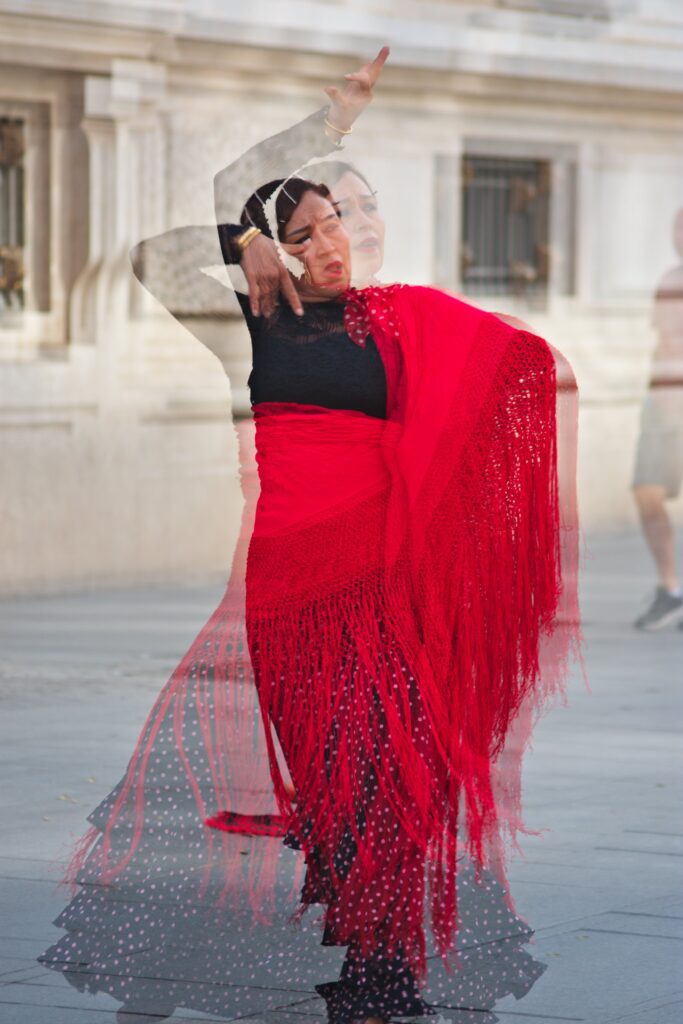
Elements of Flamenco
Flamenco is comprised of three main elements – dance, music, and song. These three parts come together in a passionate, rhythmic performance.
Flamenco Dance
The style of flamenco dance is a highly-expressive solo dance full of emotion and flair. The dance has a number of key features:
- Rapid footwork called zapateado
- Clicking of heels and toes
- Fast rhythmic turns and spins
- Expressive use of the arms and hands
- Impassioned facial expressions
There are many recognized dance forms within the broader style of flamenco, including the Alegrias, Bulerias, Farruca, Seguiriyas, Tango and more. Professional flamenco dancers train for years to master the intricate footwork and stylized body movements.
Flamenco Music
Flamenco music provides the accompaniment and rhythm for the dance. Guitars are central to flamenco, especially the Spanish guitar. Other instruments used include the cajon box drum, castanets, and hand clapping called palmas.
Flamenco uses a complex 12 count rhythm. This provides the driving force and pulse for the music and dance. The music of flamenco has a number of recognized palos or styles such as the Alegrias, Bulerias, Fandango, Rumba, Sevillanas, Solea and more.
Flamenco Song
Flamenco singing is an integral part of the overall performance. Singing is done in tune with the guitar music, providing a melodic vocal line.
There are many traditional song forms or palos which make up the flamenco repertoire. Lyrical themes often focus on tragedy, heartbreak, love, sadness and despair. Singing is highly emotional and expressive. Well-known flamenco singers are revered artists in Spain.
The interplay between the dance, guitar music, and emotional singing is what defines flamenco as an artform. Audiences are drawn in by the passion and intensity of the performance.
Flamenco Dance
The dance of flamenco is an essential element of the artform, known for its emotional intensity and rhythmic footwork. Flamenco dancers use their feet to create percussive sounds and express complex emotions through their body movements.
The origins of flamenco dance can be traced back to 18th century Andalusia. It likely emerged from the fusion of cultures between native Andalusians, Roma people, Moors, Castilians, and other groups that inhabited southern Spain. Over the centuries, distinct flamenco dance styles developed in different regions.
Some key flamenco dance styles include:
- Fandango de Huelva: One of the oldest styles, originating in Huelva. Danced in two lines accompanied by guitars and castanets.
- Farruca: An energetic male dance full of stomping and leaps. Danced solo or in pairs.
- Soleá: An introspective dance full of emotion and drama. Includes lifts, drops to the knees, and improvisation.
- Seguiriya: A solemn solo dance punctuated by heelwork and hands clapping.
- Bulería: A fast, lively dance with quick footwork and hip movements. Danced solo or in a group.
- Tanguillos de Cádiz: Elegant and romantic partner dance from Cádiz.
- Alegrías: Joyful and upbeat dance in triple meter. Includes jumps, turns, and playful courting.
Flamenco dancers train for years to master posture, footwork, arm movements, and facial expressions. Their powerful yet graceful dancing is considered integral to projecting the emotion (duende) of flamenco.
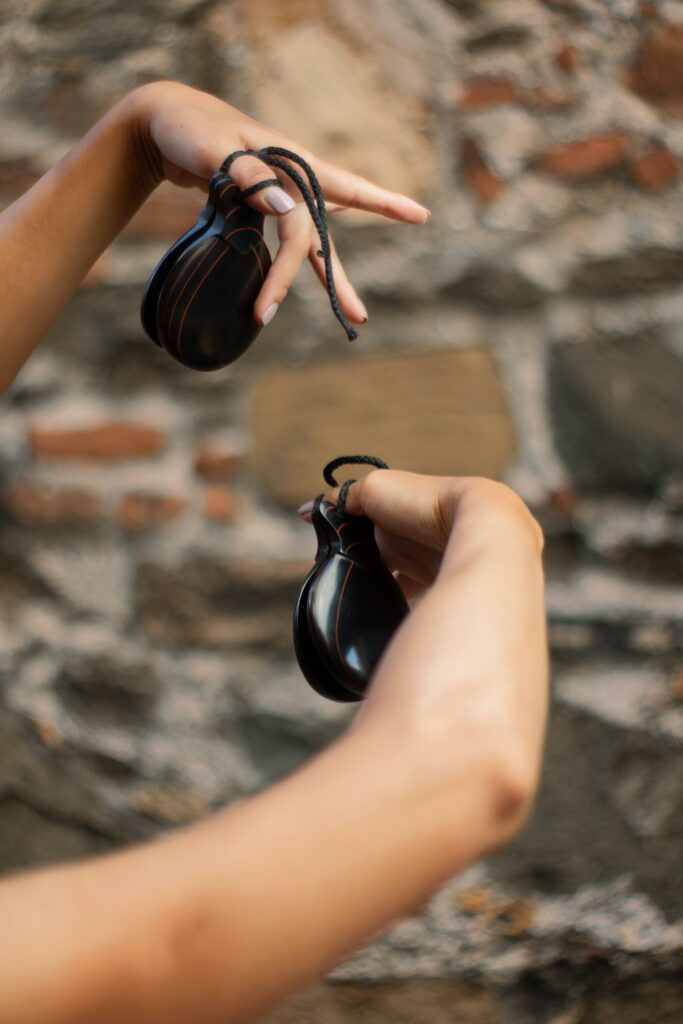
Flamenco Music
Flamenco music is an essential part of the art form, providing the rhythm and mood for the dance. The key instruments used in flamenco are the guitar, cajón box drum, palmas (handclaps), and sometimes castanets.
The guitar is the central instrument in flamenco. It provides the melodic foundation and rhythmic accents for the singer and dancer. Flamenco guitar playing involves special techniques like rasgueado (rapid finger strumming) and picado (single plucked notes).
The cajón is a wooden percussion box that is sat on by the player. It offers a deep resonant beat to complement the guitar. Handclaps or palmas are also integral to flamenco rhythm, often played in complex counterpoint to the guitar.
Castanets are less common but provide a sharper percussive sound when called for. Other instruments like the bandoneón (concertina) or violin may sometimes be incorporated for a more orchestral sound.
Rhythmically, flamenco uses unusual counts like 12 count cycles instead of 4/4 time. Accents fall in unexpected places syncopated against the underlying beat, which gives flamenco its tension and intensity. The footwork of the dance mirrors these rhythmic patterns.
Melodically, flamenco scales contain microtonal inflections and emotional slides between notes. The guitar plucking techniques combined with the vocal style of the cantaor create the uniquely haunting and expressive sound of flamenco music.
Flamenco Song
Flamenco songs (cante flamenco) are a vital component of the art form, conveying the raw passion and profound emotion of this musical tradition. While the guitar and dance often take center stage, the songs give voice to the suffering, longing, pride, and cultural identity that are at the heart of flamenco.
The themes expressed in flamenco lyrics are deeply personal yet universal. Heartbreak, unrequited love, loneliness, death, despair – these somber topics reflect the hardships faced by generations of marginalized Andalusian Gypsies. Yet flamenco also exudes strength and pride, with songs of love, freedom, and cultural identity.
Stylistically, flamenco singing is characterized by its stark raw emotionality. Cantes (songs) are performed in an a cappella style or accompanied only by guitar. The voice is pushed to the limits, employing extensive vocal ornamentations, sliding between notes, and raw gritty timbres.
Some common palos or song forms include:
- Soleá – One of the oldest and most fundamental palos, soleá has a 12-beat structure and melancholic mood. The solo singer expresses deepest sorrow and pain.
- Siguiriyas – With a slower tempo and very spare melodic structure, siguiriyas are intensely mournful and hypnotic. The lyrics poetically evoke metaphysical anguish and tragedy.
- Fandangos – Often played at a faster tempo, fandangos have lively melodies in 3/4 or 6/8 time. The themes deal with love, nature or folklore.
- Tangos – Not to be confused with the Argentine dance, flamenco tangos have a fast 2/4 or 4/4 rhythm and humorous, satirical lyrics.
Some renowned flamenco singers to check out include La Niña de los Peines, Camarón de la Isla, Enrique Morente, and Estrella Morente. Through their emotional, spine-tingling performances, these artists exemplify the enthralling power of flamenco song.
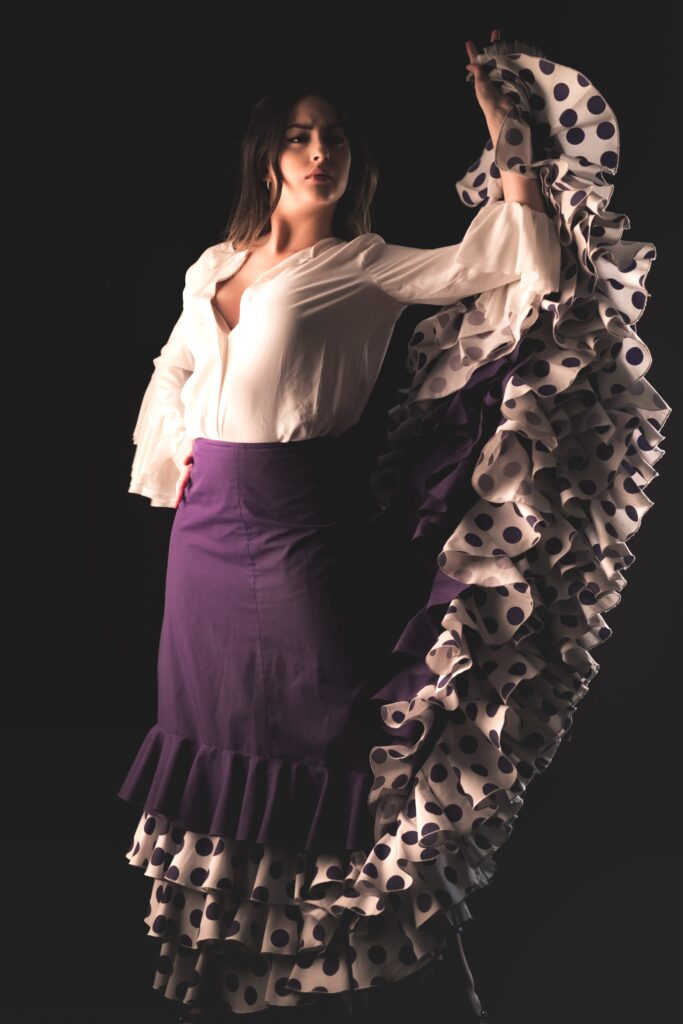
Flamenco Costumes
The clothing that flamenco dancers wear are an integral part of the art form, with intricate and eye-catching designs that complement the movements of the dancers. Traditional flamenco dresses are known as “trajes de flamenca” and have some distinctive features:
- Long, ruffled skirts – Usually made of many layers of fabric such as polka dot tulle or lace. The ruffles accentuate the footwork and allow freedom of movement. Dark colors like black, deep reds and blues are common colors.
- Off-the-shoulder tops – These may have puffy sleeves, frills or ruffles. They are typically high-necked and fitted at the waist.
- Shawls – Decorative fringed or polka dot shawls are usually worn over one shoulder or draped across the arms. Their flowing nature enhances the arm movements.
- Flowers and ornaments – Fresh flowers like carnations or roses are often worn in the hair along with decorative combs. Bright hair ornaments accentuate head movements.
- Fans – Hand-held folding fans are used as props during dance numbers. When opened, they complement arm and wrist actions. Intricate designs painted on them reflect the overall visual flair.
- Shoes – Flamenco heels produce the characteristic percussive taps. Women may wear black slippers, boots or tie-up shoes with a small heel.
The striking costumes of flamenco dancers contribute to the rhythmic spectacle and draw attention to specific body movements. Their vibrancy and craftmanship are an integral part of the performance.
Conclusion
Experiencing an authentic flamenco show is one of the highlights of visiting Madrid. As the art form has deep roots in the city, the shows exude passion and artistry that you cannot find elsewhere. The footwork, music, and emotional singing leave audiences mesmerized.
While there are many venues to take in a performance, some key spots include Las Carboneras, Café Ziryab, and Cardomomo. These venues allow you to fully immerse yourself in the drama and excitement of flamenco. Seeing the swirling, stomping dancers accompanied by wailing guitars and clapping is unforgettable.
Flamenco is an integral part of Madrid’s culture and identity. By attending a show, you gain insight into the city’s history as well as exciting entertainment. The shows demonstrate the deep emotions conveyed through this artform. From the intricate hand movements to the heartfelt singing, flamenco communicates sentiments wordlessly.
Visiting Madrid and experiencing authentic flamenco allows you to connect with the passion of the city. The shows are vibrant, lively, and moving. Flamenco stirs the soul, so be sure to take in a spectacular show during your time in Madrid.
Further Reading
If you want more Madrid travel information, make sure to check out these posts:
- 2024 Madrid Travel Guide
- The Best Tapas in Madrid
- Top 5 Spain Paradores you Must See
- Book with Ease: Madrid’s Top 3 Airport Hotels Made Simple
- The 15 Best Hotels in Madrid You Need to Know About
- Book With Ease: Madrid’s Top 3 Airport Hotels Made Simple
- Madrid Tapas Scene: Jamón, Queso, and Olives Have My Heart
- Christmas In Madrid
- New Year’s Eve in Spain
- Discover the Best Christmas Markets in Madrid: A Festive Guide
Tapas and Drinks in Spain
Discover the top sangria spots and tapas bars in Madrid in these guides, which also offer must-see attractions and tips for a weekend in the city. Dive into the world of tapas with a foodie's adventure in Barcelona and explore Madrid's best tapas bars with a comprehensive bar crawl guide.
Quench Your Thirst: The Best Sangria Spots in Madrid
Embark on a flavorful adventure through Madrid's bustling streets with a guide to the city's best sangria spots, where each glass is a celebration of Spanish tradition and taste.
Madrid in a Weekend: Must-See Attractions, Tapas, and Tips
Experience the essence of Madrid in just a weekend with this comprehensive guide, featuring must-see attractions, tantalizing tapas hotspots, and insider tips for a memorable Spanish escape.
Bite-Size Barcelona: A Foodie's Adventure into the World of Tapas
Embark on a culinary journey through Barcelona's vibrant food scene, exploring the rich tapestry of flavors and culture behind Spain's iconic tapas, one bite at a time
The Best Tapas in Madrid: The Tapas Bar Crawl Guide
Indulge in Madrid's rich tapestry of flavors with this ultimate tapas bar crawl guide, unveiling the city's best bites and the stories behind them.
The information in this article is for informational purposes only and may not reflect the most current updates; please verify details independently before making travel plans. Always check with local sources before confirming your plans.
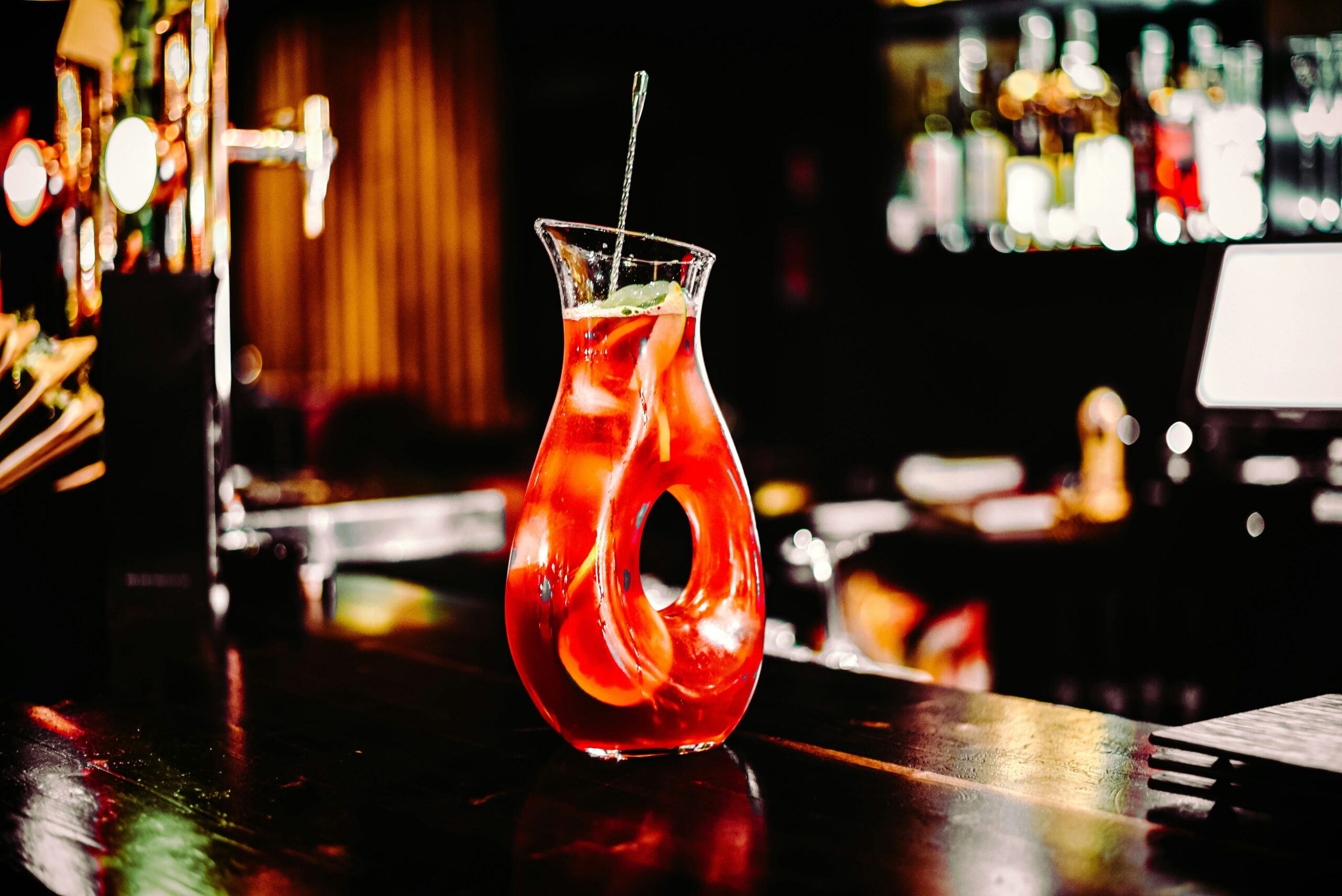
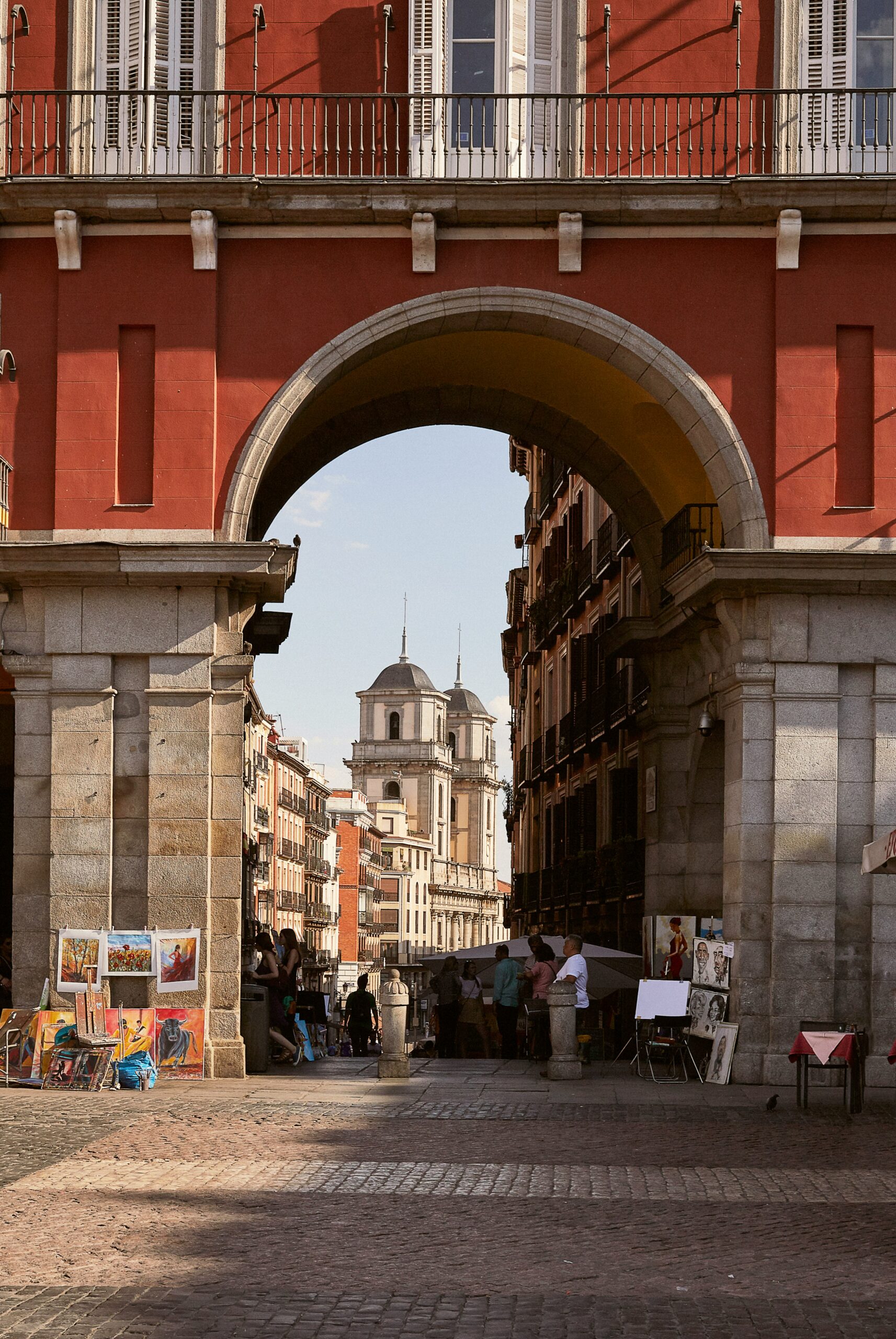
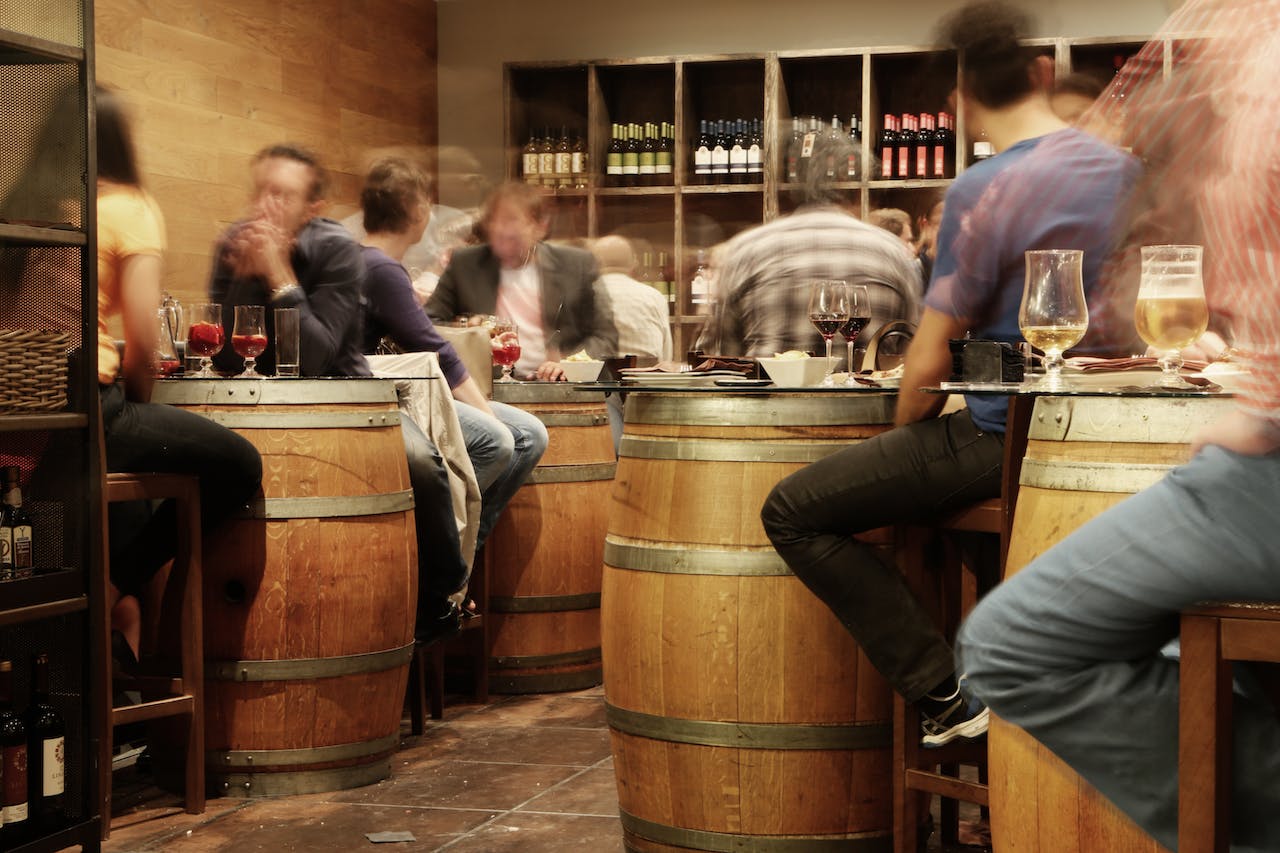
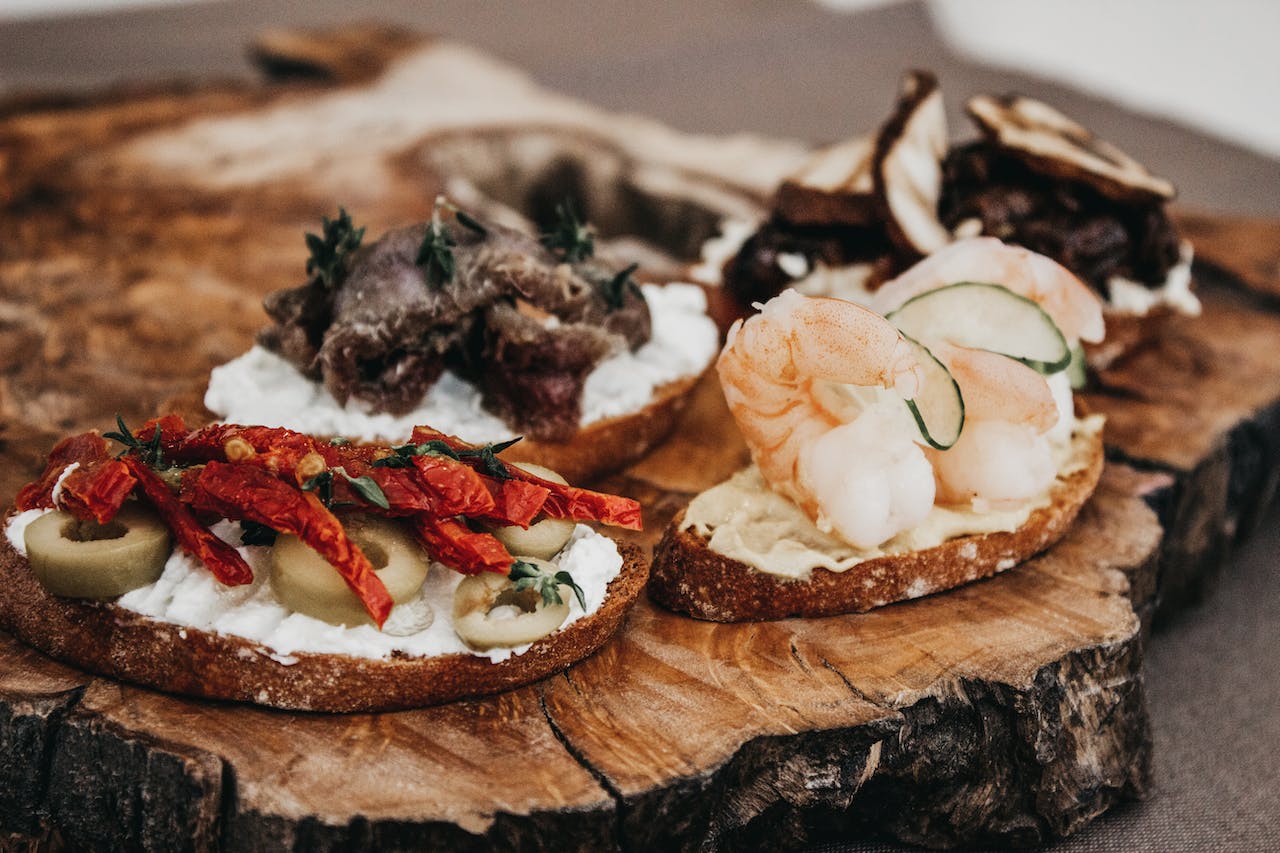
Comments Off on A Guide to Madrid’s Best Flamenco Shows